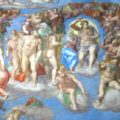Many collectors and investors choose contemporary art paintings because they represent the cutting edge of art today. They capture the vibrancy of the modern world and serve as indicators of the ever-changing art landscape. Additionally, they can become significant investments if created by an up-and-coming contemporary artist and acquired early in their career.
Contemporary art paintings are profitable today for the same reason Picasso’s paintings were successful in his time. The art world is full of movements that emerge as reactions to previous artistic practices. For example, Impressionist artists worldwide developed a revolutionary way of creating stunning works during their time. Artists like Claude Monet, Pierre-Auguste Renoir, Camille Pissarro, and Paul Cezanne in France, and Tom Roberts, Fredrick McCubbin, Jane Sutherland, Charles Conder, and Arthur Streeton in Australia, took their palettes outdoors and captured light in “plein air” with unique color techniques. In the late nineteenth century, these groundbreaking contemporary art paintings were highly regarded worldwide for what they contributed to the art world.
However, if you place a Monet next to a Jackson Pollock, you will see the significant differences in conceptual development, technique, and practice in paintings. This reflects the evolution of art over time. Contemporary art pieces are profitable because they break new creative ground and show us our world in novel and innovative ways. Some believe that current practices are not a reaction to previous genres but an entirely different approach to creating art.
Many discerning collectors invest in contemporary art paintings, choosing them over traditional paintings for the reasons mentioned above. It is exciting to be part of an art movement, whether as an artist or someone who collects the art of the time. As a collector, it is thrilling to invest in an artist’s work when they are young in their career and emerging in the art world. The excitement comes from knowing you’re onto something that could yield significant returns in the future. While always a risk, there are indications that these paintings could be a wise investment. Another reason people invest in young and upcoming contemporary artists is that their work resonates emotionally with the specific contemporary art paintings they purchase. Throughout history, artists have relied on collectors to support and invest in their work. From the days of Michelangelo, when the Catholic Church collected his contemporary art paintings, to the present, where wealthy collectors, celebrities, artists themselves, art enthusiasts, and virtually anyone can collect the works of contemporary artists.
I believe everyone should display contemporary art paintings in their homes. Each modern development in the art world should be supported by the people living in that era. However, art is highly personal and subjective. What one person likes in a painting, another may completely despise. The art pieces I have acquired from other artists were purchased because I love them and want to support other artists. I wouldn’t buy something I didn’t like just to make a profit on it later, as I have to live with the art in my home. I also purchase from artists whom I believe are still emerging and have the potential to do exceptionally well in the future. The best approach to collecting contemporary art is to combine personal taste with business savvy. Remember, you will have this hanging on your wall for years to come, so if you’re not a fan of Damien Hirst’s self-portrait with a severed head, don’t buy it.
There are many reasons why contemporary art can surprise us. The themes it explores are not drastically different from those presented in art paintings over the past century, such as death, life, love, sex, and animals. However, it’s the presentation of these themes that can elicit surprise today. For example, Damien Hirst’s use of a real dead sheep, encased in a glass box filled with formaldehyde and displayed in a gallery, provokes a different psychological response than a neo-traditional painting of a sheep being killed for sacred or religious reasons.
There has been a growing irreverence in contemporary art since the 1980s and 90s, which somewhat reflects the state of our society today. Cynicism has played a significant role in contemporary art over the past 20 years. Not all contemporary art is shocking; it can also be subtle, witty, humorous, clever, or beautiful. Regardless of the approach, contemporary art paintings prompt us to pause, reflect, and question life as we know it.
The resonance or shock value of contemporary art is influenced by the values we place on the subject matter and our responses to it, which are rooted in our individual belief systems, life experiences, relationships, and our understanding of the world.
Manuel Marino is a seasoned Senior Producer, Music Composer, and Artist with over a decade of experience. He specializes in branded entertainment across various mediums, including video games, films, and advertising campaigns. With 20+ years as a game music composer, Manuel has worked on numerous platforms, creating diverse orchestral soundtracks. HIRE ME


 Manuel is a passionate, driven, and techsavvy AV technician,
Manuel is a passionate, driven, and techsavvy AV technician, 











Absolutely right! Aside from collecting customized wristbands of speedy wristbands, i do also collecting paintings. I have now 30 paintings in house, some are gift of my friends and love one’s.. Painting is really amazing!